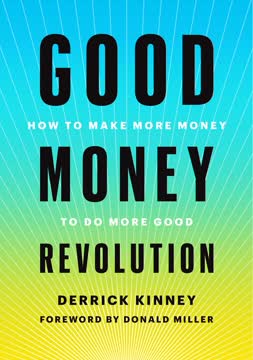Key Takeaways
1. Money is good, and you should have more of it
Money is good because you can use it for good; you can use it to change the world.
Reframe your perspective. Money itself is neutral; it's how you use it that matters. Instead of viewing money as evil or the root of all problems, see it as a tool for positive change. When good people have more money, they can do more good in the world.
Pursue financial success ethically. Focus on creating value for others and solving problems. Successful entrepreneurs like Jeff Bezos and Elon Musk built their wealth by providing services that millions of people find useful. Instead of criticizing their success, learn from their strategies and apply them to your own pursuits.
Embrace the river mentality. Think of money as a flowing river, not a stagnant pond. There's not a limited supply – money flows where value is created. By adopting this mindset, you open yourself up to endless possibilities for earning and making a positive impact.
2. Generosity is the key to lasting happiness and wealth
Happiness comes from what you do with your money, not how much you have.
Give to be truly rich. Research shows that spending money on others or donating to causes you care about activates the pleasure centers in your brain, creating a "warm glow" effect. This leads to greater happiness and life satisfaction than simply accumulating wealth for yourself.
Start small, but start now. You don't need to be wealthy to be generous. Even small acts of giving, like buying coffee for the person behind you in line or donating a few dollars to a local charity, can make a significant impact on both the recipient and your own well-being.
Create a ripple effect. Generosity is contagious. When you give, you inspire others to do the same, creating a positive cycle of kindness and support in your community. This not only improves the lives of those around you but also enhances your own reputation and networks, potentially leading to more opportunities for success.
3. Overcome negative money mindsets to achieve financial success
Money is simply a tool. It doesn't have emotions. It doesn't have feelings. It does what you tell it.
Identify your money scripts. Recognize the beliefs about money that you've inherited from your upbringing or past experiences. Common negative mindsets include:
- Money represents scarcity and strain
- Money works against you
- You're destined to struggle financially like your family
- There's not enough money to fulfill your dreams
- The money math doesn't add up for giving
Challenge and rewrite your narrative. Once you've identified these limiting beliefs, actively work to replace them with more empowering thoughts. For example, instead of thinking "I'll never have enough," reframe it as "I have the ability to create value and earn more."
Embrace imperfection and learn from mistakes. Share your financial missteps with others, especially your children. This "power of the screw-up" not only makes you more relatable but also provides valuable learning opportunities for those around you.
4. Implement the Good Money Framework to earn, save, and give more
The key to your success and having a daily passion that fuels you is to connect your cash to a cause, your money to a movement, your profits to a purpose.
Follow the 7-step framework:
- Discover your Generosity Purpose
- Determine your top three financial goals
- Determine your desired income
- Review your options for earning more money
- Create a simple saving and investing plan
- Implement your generosity strategy
- Track your wealth-building and generosity progress
Use the three Good Money Levers:
- Save more: Cut unnecessary expenses and automate your savings
- Crush your debt: Prioritize high-interest debt and create a payoff plan
- Earn more: Add value at your current job, start a side hustle, or launch your own business
Invest wisely using the four lanes strategy:
- Checking/savings (slow lane): Easily accessible, low-risk funds
- 2-5 year goals (middle lane): Moderate-risk investments for short-term goals
- Retirement (fast lane): Long-term, higher-risk investments for growth
- Play account (fastest lane): Small portion for high-risk, speculative investments
5. Plan for retirement strategically using the Sweet Spot Solution
Planning for retirement is essential, so don't be afraid of it.
Take advantage of your sweet spot. This is the period when your children are financially independent, you're close to paying off your house, and you have discretionary savings available. Use this time to catch up on retirement savings and planning.
Follow the six-step Sweet Spot Solution:
- Take a financial X-ray
- Review your money in motion
- Assess your asset protection plan
- Envision your retirement
- Determine your spendable monthly income goal
- Make a Sweet Spot commitment
Avoid common retirement mistakes:
- Not calculating your magic number (required savings)
- Failing to set financial goals
- Not creating a plan to reach your goals
- Not investing to create income
- Neglecting to set up an automatic savings plan
- Not being on the same page as your spouse about money
- Overlooking long-term care insurance
6. Teach your children valuable money lessons for lifelong success
Teach your kids and grandkids that money is not the enemy—that it's not money's fault you can't do something. Money is a tool. You can make it, grow it, give it—and make the world a better place.
Instill three key money lessons:
- Be an investor, not a spender: Teach them to evaluate purchases and understand that every dollar spent is an investment in something.
- Be a confident wealth builder: Encourage automatic saving, generous giving, and budgeting from an early age.
- Be the creator of money, not just the receiver: Foster an entrepreneurial mindset and help them explore ways to generate their own income.
Lead by example. Include your children in financial discussions and decision-making processes. Let them see you budgeting, investing, and giving generously. Share both your successes and failures to provide valuable learning experiences.
Make it fun and engaging. Use creative challenges like the $5 Challenge to teach entrepreneurship and problem-solving skills. Encourage them to find ways to turn a small amount of money into more through their own ingenuity and hard work.
7. Giving makes you happier, healthier, and more successful in business
Giving is contagious. A study by Harvard researchers James Fowler and Nicholas Christakis shows that when one person behaves generously, it inspires observers to behave generously too.
Experience the "helper's high." Giving activates the pleasure centers in your brain, releasing endorphins and creating a sense of joy and well-being. This positive feeling can lead to improved mental and physical health.
Boost your business through generosity. Companies that incorporate giving into their business model often see increased customer loyalty, employee engagement, and overall success. Examples include:
- Bombas: Donates a pair of socks for every pair sold
- TOMS: Gives away a pair of shoes for each pair purchased
- Your business: Connect your products or services to a cause you care about
Create a positive cycle. When you give, you inspire others to do the same, creating a ripple effect of generosity in your community and beyond. This not only helps those in need but also enhances your reputation and networks, potentially leading to more opportunities for success.
8. Create a People Portfolio to diversify your giving strategy
You'll get your best dividends by investing in people. It makes you a better person and a better investor.
Expand your giving horizons. Look beyond traditional charities to identify individuals in your life who could benefit from your support. This might include friends, family members, or even strangers with potential who just need a small boost.
Implement diverse giving strategies:
- Anonymous giving: Leave surprise gifts or financial support without revealing your identity
- Non-monetary gifts: Offer encouragement, mentorship, or skills training
- Dream funding: Help someone pursue their passion project or business idea
- Weekly encouragement: Maintain a list of people to text or call regularly with words of support
Balance your giving approach. Consider using one of these models to structure your giving:
- 80-10-10: Live on 80%, save 10%, give 10%
- 70-10-10-10: Live on 70%, save 10%, pay down debt 10%, give 10%
- Variable option: Start with giving 1% and increase gradually as you pay down debt and increase savings
By creating a diverse People Portfolio and implementing a structured giving strategy, you can maximize the impact of your generosity while also reaping the personal benefits of giving.
Last updated:
FAQ
1. What is "Good Money Revolution" by Derrick Kinney about?
- Money as a Force for Good: The book argues that money is not inherently bad; instead, it can be a powerful tool for positive change when used by good people.
- From Success to Significance: Kinney encourages readers to move beyond personal financial success and use their wealth to make a meaningful impact in their communities and the world.
- Practical Financial Framework: The book provides a step-by-step framework for earning more, saving more, and giving more, all while connecting your financial goals to a greater purpose.
- Mindset Shift: It challenges traditional negative beliefs about money and promotes a mindset that pairs prosperity with generosity.
2. Why should I read "Good Money Revolution" by Derrick Kinney?
- Breaks Money Taboos: The book helps readers overcome guilt, shame, or confusion about wanting to make more money and shows how wealth can be used for good.
- Actionable Steps: Kinney offers practical advice and exercises for improving your financial situation, regardless of your starting point.
- Purpose-Driven Wealth: It teaches how to align your financial goals with causes you care about, making your pursuit of wealth more fulfilling.
- Inspiration and Motivation: Through real-life stories and interviews, the book inspires readers to believe they can achieve both financial freedom and significance.
3. What are the key takeaways from "Good Money Revolution" by Derrick Kinney?
- Money is Good: The core message is that money, in the hands of good people, leads to good outcomes and should not be vilified.
- Generosity Fuels Wealth: Giving is not just a moral act but a practical strategy that can actually help you make more money and find greater satisfaction.
- The Good Money Framework: Kinney’s seven-step framework helps readers discover their "Generosity Purpose," set financial goals, and create a plan for earning, saving, and giving.
- Mindset Matters: Changing your beliefs about money—from scarcity and fear to abundance and purpose—is essential for lasting financial and personal transformation.
4. How does Derrick Kinney define the "Good Money Framework" in "Good Money Revolution"?
- Seven-Step Process: The framework includes discovering your Generosity Purpose, setting top financial goals, determining desired income, reviewing options to earn more, creating a saving/investing plan, implementing a generosity strategy, and tracking progress.
- Purpose-Driven Planning: Each step is designed to connect your financial actions to a cause or purpose that excites and motivates you.
- Practical Exercises: The book provides fill-in-the-blank exercises for each step, making the framework actionable and personalized.
- Continuous Improvement: Regular tracking and family discussions are encouraged to keep your financial and generosity goals aligned and evolving.
5. What is the "Generosity Purpose" concept in "Good Money Revolution" by Derrick Kinney?
- Personal Cause Connection: Your Generosity Purpose is the specific cause, injustice, or need that you feel passionate about and want to support with your money.
- Motivation for Earning: Identifying a Generosity Purpose gives you a compelling reason to earn more, as your increased income directly supports something meaningful.
- Practical Implementation: The book guides you to articulate your Generosity Purpose and integrate it into your financial planning and daily work.
- Cycle of Giving: By connecting your cash to a cause, you create a motivating cycle where earning, saving, and giving reinforce each other.
6. How does "Good Money Revolution" by Derrick Kinney address the relationship between money and happiness?
- Money Buys Happiness—To a Point: Research cited in the book shows that increased income boosts happiness up to a certain level, after which more money doesn’t necessarily mean more happiness.
- What You Do Matters More: True happiness comes from how you use your money, especially when you spend it on others or support causes you care about.
- Generosity and Well-Being: Studies and stories in the book demonstrate that giving money away leads to greater satisfaction, health, and even contagious happiness.
- Purpose Over Possessions: The book emphasizes that fulfillment is found in generosity and impact, not in accumulating more possessions.
7. What are the three "Good Money Levers" in Derrick Kinney's "Good Money Revolution"?
- Save More: Building a habit of saving, automating contributions, and treating your money like a business with every dollar having a job.
- Crush Your Debt: Aggressively paying down high-interest debt, tracking progress quarterly, and using accountability and rewards to stay motivated.
- Earn More: Treating your job like a business, adding value to your company, starting side hustles, and negotiating raises or promotions.
- Lever Synergy: Pulling all three levers together amplifies your wealth-building and generosity potential.
8. How does "Good Money Revolution" by Derrick Kinney suggest you invest your money?
- Three Buckets Approach: Invest for yourself (traditional investments), invest in yourself (education, skills, personal growth), and invest in others (relationships, community).
- Four Lanes Strategy: Diversify your investments across checking/savings (safe), 2-5 year investments (moderate), retirement accounts (long-term growth), and a "play account" (higher risk/speculative).
- Consistency Over Timing: Start investing early and regularly, focusing on long-term goals rather than trying to time the market.
- Align Investments with Purpose: Ensure your investment strategy supports your financial goals and Generosity Purpose.
9. How does "Good Money Revolution" by Derrick Kinney help readers overcome negative money mindsets?
- Identifying Limiting Beliefs: The book explores common negative attitudes about money, such as scarcity, fear, and the belief that money is bad or unattainable.
- Flipping the Script: Kinney provides strategies to reframe these beliefs, encouraging readers to see money as a tool for good and to embrace abundance.
- Family and Cultural Influences: The book discusses how childhood experiences and societal messages shape our money scripts and how to consciously rewrite them.
- Practical Exercises: Readers are guided through self-reflection and action steps to build a healthier, more empowering relationship with money.
10. What advice does Derrick Kinney give in "Good Money Revolution" for teaching kids about money?
- Be an Investor, Not a Spender: Teach kids to evaluate purchases, save, and invest rather than just spend.
- Build Wealth Confidence: Encourage habits like automatic saving, giving, and budgeting from an early age.
- Create Money, Don’t Just Receive It: Inspire entrepreneurial thinking and side hustles, showing kids how to be creators of money, not just recipients.
- Open Conversations: Model transparency about money, share both successes and mistakes, and involve kids in family financial discussions and giving decisions.
11. How does "Good Money Revolution" by Derrick Kinney connect generosity with business and career success?
- Generosity as a Business Strategy: The book shows that companies and individuals who give back attract more customers, retain employees, and build trust.
- Purpose-Driven Branding: Aligning your business or career with a Generosity Purpose differentiates you in the marketplace and creates loyal relationships.
- Case Studies: Examples like Bombas, TOMS, and personal stories illustrate how giving can drive both profit and impact.
- Employee Engagement: Giving at work increases morale, creativity, and retention, benefiting both individuals and organizations.
12. What are the best quotes from "Good Money Revolution" by Derrick Kinney and what do they mean?
- "Money is good, and good people should have more of it." – This encapsulates the book’s core message that wealth in the right hands leads to positive change.
- "Connect your cash to a cause, your money to a movement, your profits to a purpose." – Kinney’s call to action for aligning financial goals with meaningful impact.
- "You reap what you sow." – Emphasizes that generosity and wise financial habits lead to greater rewards, both personally and financially.
- "Failure is not final. It’s the start of a new story." – Encourages readers to see setbacks as learning opportunities on the path to success.
- "The way you’re choosing to use your money can change your family, your health, your wealth, your happiness, your fulfillment, and the world." – Highlights the transformative power of intentional, purpose-driven financial decisions.
Review Summary
Good Money Revolution receives mixed reviews, with ratings ranging from 2 to 5 stars. Many readers appreciate the book's fresh perspective on money, emphasizing generosity and purposeful giving. Some find the ideas revolutionary and life-changing, praising Kinney's approach to connecting wealth with meaningful causes. However, critics note redundancy, oversimplification, and a lack of depth in financial advice. The book's focus on families and Christian values resonates with some readers while alienating others. Overall, reviewers agree that the book offers a unique take on money management and philanthropy.
Similar Books

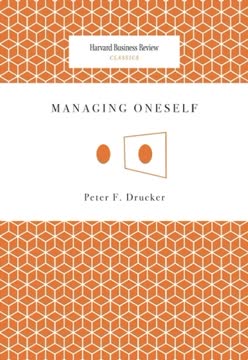

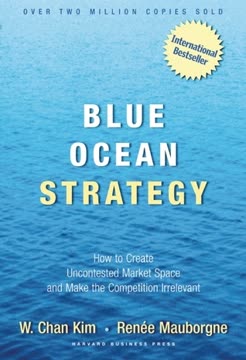
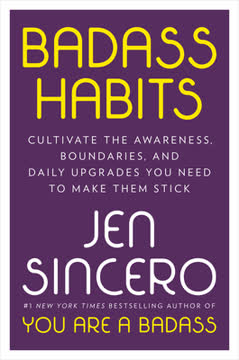
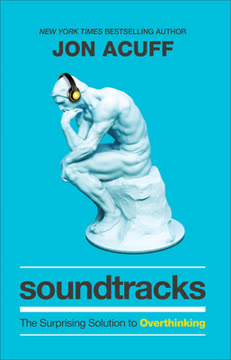

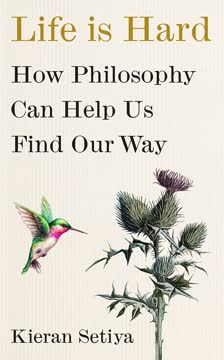
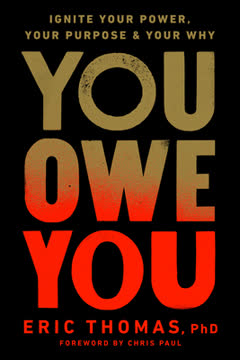
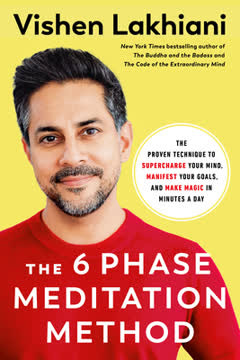
Download PDF
Download EPUB
.epub digital book format is ideal for reading ebooks on phones, tablets, and e-readers.
